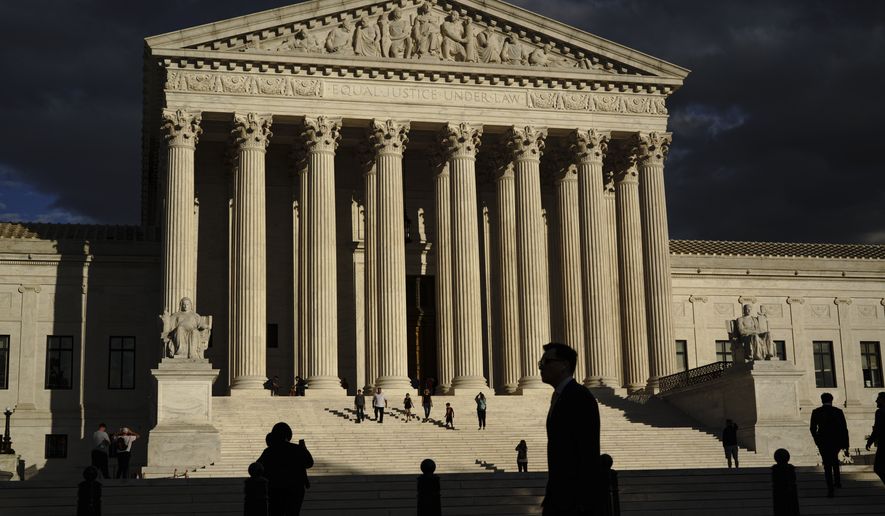OPINION:
The U.S. Supreme Court recently agreed to hear two cases about affirmative action in college and university admissions. The litigation began in 2014 when the nonprofit Students for Fair Admissions sued the University of North Carolina at Chapel Hill and Harvard University for unfairly discriminating against white and Asian students in their admissions processes, giving preference to Black and Hispanic students instead. Both UNC-Chapel Hill, which is the oldest public university in the United States, and Harvard, which is the oldest private university, prevailed in the lower courts.
The UNC-Chapel Hill and Harvard cases, which have been consolidated by the Supreme Court, mark the sixth time the nation’s highest Court has addressed affirmative action in higher education. In the first, DeFunis v. Odegaard (1974), the Court dismissed the lawsuit as moot because the University of Washington had agreed to allow Marco DeFunis Jr. to enroll and to earn a diploma. In the second, Regents of the University of California v. Bakke (1978), the Court held that any racial quota for the purpose of admissions is illegal. Allan Bakke, a white male, therefore prevailed, although the case fractured the court, with the nine justices issuing a total of six opinions.
The third case was two consolidated lawsuits against the University of Michigan that were decided by the Supreme Court in 2003. Jennifer Gratz won her case against the undergraduate college to which she had been denied admission because the Court concluded that it was illegal for the college’s admissions process to award an applicant a set number of points solely because the applicant was not white. (Ms. Gratz is white, and she did not receive the extra points.) Barbara Grutter lost her lawsuit against the University of Michigan’s law school. The court decided in her case that race was used as only one factor among many in the law school’s admissions process, and endorsed the approach articulated by Justice Lewis Powell in his concurring opinion in Mr. Bakke that race may be so used in order to achieve “diversity” in higher education. Further, the court accepted the supposition that there was a compelling interest to ensure a “critical mass” of students from minority groups.
In 2013 the Supreme Court decided a fourth affirmative action case, Fisher v. University of Texas. The court held that the use of race in college admissions is legal only if survives “strict judicial scrutiny,” and faulted the lower court for presuming that the University had acted in good faith and for placing the burden of rebutting that presumption upon Abigail Fisher, the white plaintiff who had been denied admission.
Perhaps surprisingly, the fifth decision about affirmative action by the Supreme Court, 2016’s reexamination of the University of Texas’ affirmative action program, found the court appearing to defer to the good faith of the faculty and administration of the university when ruling for the university.
The decisions in the court’s affirmative action precedents were accompanied by vigorous dissents.
To state the obvious, the Supreme Court’s affirmative action jurisprudence is a mess. Race can be considered in higher education admissions decisions for purposes of “diversity,” but it cannot be considered too much. Quotas are illegal, but a “critical mass” is not. A reviewing court is supposed to afford a college or university no deference with respect to its assertion that its chosen means to attain diversity are narrowly tailored to that goal, but the sorts of dissemblings that colleges and universities typically offer when they are trying to convince reviewing authorities that their admissions programs are not illegal are OK.
Significantly, the petitioner in the Harvard and UNC-Chapel Hill litigation is asking the Supreme Court to clean up the mess and rule that it is illegal to consider race and ethnicity at all in higher education admissions decisions. Given that three of the court’s six conservatives — Justices John Roberts, Clarence Thomas and Samuel Alito — are already on record about the illegality of race-conscious admissions processes and that the other three — Justices Neil Gorsuch, Brett Kavanaugh and Amy Coney Barrett — were appointed by former President Donald Trump, it seems more likely than not that the nation’s highest court will hold that federal law requires that colleges and universities assess applicants as individuals rather than as members of racial or ethnic groups.
Whether the nation’s colleges and universities will comply with a ruling abolishing affirmative action is a story for another day.
• Scott Douglas Gerber is a law professor at Ohio Northern University and an associated scholar at Brown University’s Political Theory Project. His nine books include “A Distinct Judicial Power: The Origins of an Independent Judiciary, 1606-1787” (Oxford University Press).




Please read our comment policy before commenting.